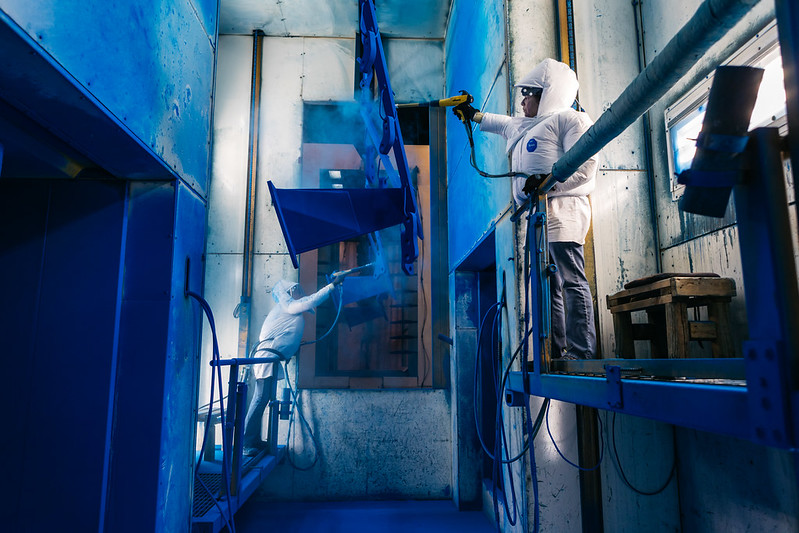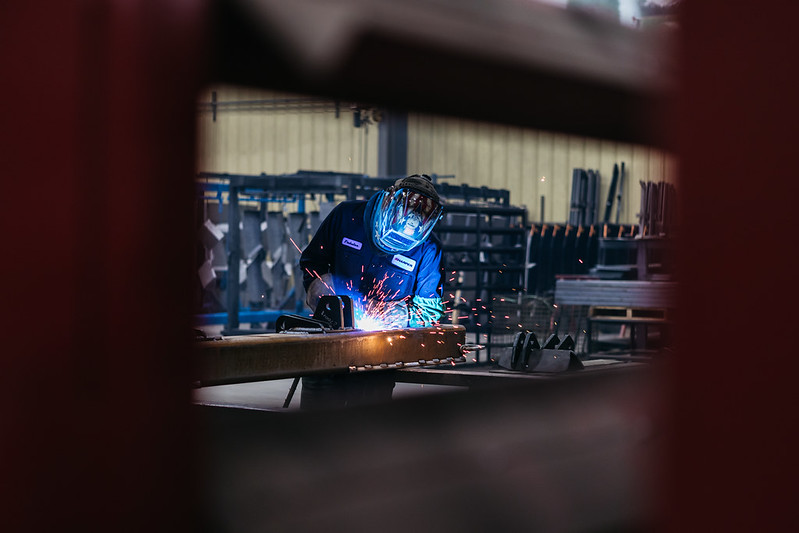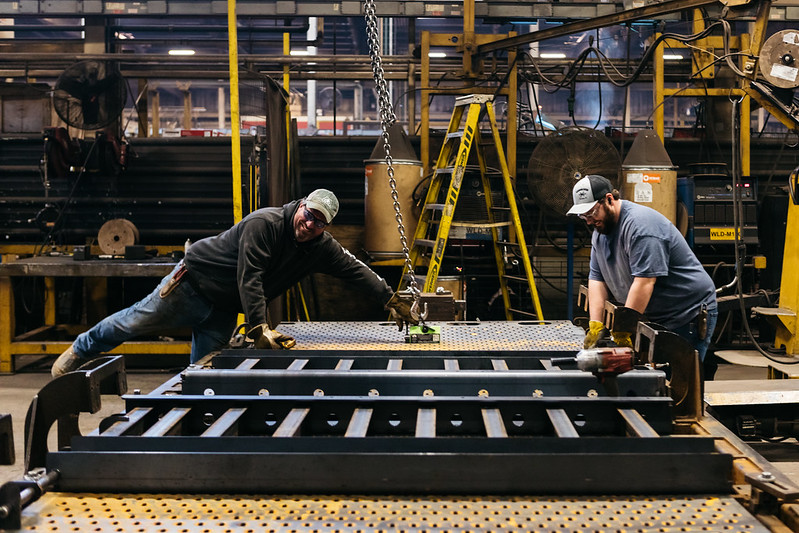By Gregg Wartgow, Special to AEM —
The rise of artificial intelligence (AI) over the past few years has been undeniable, and the advances being made are poised to revolutionize companies, economies, and societies in the years to come.
“We’re now building machines that have human intellectual equivalence,” said Zack Kass, prominent AI futurist with over a decade spent in artificial intelligence leadership, including a stint as Head of Go-To-Market at artificial intelligence research firm OpenAI. According to Kass, the “AI Revolution” started with tools like text to image and text to video, and it has now evolved to things like text to vector (i.e. CAD) and even text to smell. “The technology is expanding all the time, and we’re truly looking at a multi-modal future,” Kass said.
In his current consultative role, Kass has advised high-profile organizations like Coca-Cola, Boeing, and even The White House on AI strategy. He spoke about the future of AI at AEM’s Annual Conference in November. What that future ultimately looks like will largely depend on how societies choose to leverage AI.
Save the Date: 2025 AEM Annual Conference -- Join AEM Nov. 19-21, 2025, at the JW Marriott Miami Turnberry Resort & Spa in Aventura, Florida. For more information, visit aem.org/annual.
As Kass explained, some elements of society have reservations regarding how the proliferation of AI could displace workers and, perhaps, even result in a more dehumanized world where people are more interested in virtual reality than an actual physical one. Some also wonder if AI could result in an intellectual de-evolution of humans.
Perhaps the biggest concern is what could happen if AI goes awry. The unintended consequences of machine learning, resulting from what a machine is not trained on what not to do, are real. “The good news is that the smartest people in AI are focused on this alignment problem,” Kass pointed out.
Another piece of good news is that the cost of implementing AI has decreased significantly as the technology has advanced. Developing the next iteration, such as evolving from ChatGPT 3.5 to ChatGPT 4.0, does require significant investment. But for everyday organizations to begin leveraging the latest tools, the cost has come down exponentially.
“The cost to run ChatGPT 4 was $60 per million tokens (units of data an AI model processes),” Kass shared as an example. “Today it’s around $4. That’s important because anytime a critical resource declines in price this much and this fast, there is an economic explosion. Very good things happen when very important things become inexpensive.”
The Future in Three Phases
Kass envisions three phases of integration in what he calls the AI Revolution. Phase 1, the enhanced application phase, is already well underway. This is where organizations and individuals begin leveraging AI as standalone applications and tools embedded in everyday software.
Phase 2, expected to begin unfolding in 2027, ushers in an era of autonomous agents where goals and tasks are assigned to machines. Those machines then carry out those tasks across different applications. “It’s like Siri that actually works,” Kass said with a laugh.
Phase 3, expected to commence around 2035, is where AI shifts to more of a natural language operating system, where communicating with AI will be very similar to human-to-human communication. Kass is most excited about this phase because it opens the door to AI adoption by the masses—even those who are not technologically savvy.
“A big problem with the digital divide today is that machines are not second nature, and a lot of people get left behind because they don’t know how to use technology,” Kass said. “Phase 3 is going to change that. The accessibility of this technology is going to materially improve.”
Given that, the world will soon have access to fully integrated and unmetered intelligence.
“We are entering our next renaissance,” Kass said. “We’re about to see a massive expansion of human potential. So, one of the questions we have to ask is how we will harness machines in this next renaissance.”
“We’re now building machines that have human intellectual equivalence. The technology is expanding all the time, and we’re truly looking at a multi-modal future.” -- AI Futurist Zack Kass
Societal Thresholds Dictate Technology’s Potential
The pace at which the AI Revolution unfolds is contingent on two things. First is breaking through the technology threshold with respect to what a machine can be asked to do. Brilliant minds are already working on this and making significant progress. Secondly, and more importantly, is the societal threshold where society decides what it wants a machine to do.
“It’s actually the societal thresholds that will determine our future the most,” Kass said.
Throughout much of history, technology and societal thresholds were much in alignment. But as society has evolved and technology has become more advanced, society has put more guardrails in place to mitigate the perceived risk of adopting new technologies. Now well into the 21st century, getting that societal threshold to move can be difficult.
“This is why the future is not about what machines can do, but what our tolerance will be regarding their failure points,” Kass said. “Risk-adjusting can be hard. The problem isn’t going to be whether AI can do something well, but whether we’ll be penalized if it breaks.”
Focus on AI’s Potential to Enrich Society
It’s important to consider the ways in which AI can enrich a society by improving productivity, increasing joy, and reducing suffering. Focusing on the benefits can help move societal thresholds. It all ties to the massive expansion of human potential.
Kass said there is already evidence of that expansion. Data shows that what one person in the U.S. can do today on a GDP basis is 70% greater than in 1995. “In the next five years, my guess is it will be 100%,” Kass speculated. “In 10 years, it might be 1,000%. I’m not exaggerating.”
The potential for scientific breakthroughs is just as promising as the gains in productivity. As Kass pointed out, AI has already helped discover new antibiotics, among other fetes. “I believe AI will eventually be able to solve things like quantum computing and fusion energy, along with biological and life sciences like cancer,” Kass said. “This will likely happen in the next 30 years.”
The prevalence of AI in everyday life could also result in people reclaiming an enormous amount of time—time they could begin spending on things that make their lives more enjoyable. This could also be perceived as a risk, particularly to those who find their work to be the most consequential thing they do. Kass said it’s important to keep things in perspective.
“When most people think about the idea of AI taking their job, their next thought goes to the economics of how they’re going to make a living,” Kass said. “That’s misguided. Every industrial revolution has had profoundly positive economic consequences. Wages, productivity, and safety go up. Unemployment goes down. But that still doesn’t equate to happiness. Some people can’t see past the emotional damage of losing their job, so they can’t see the economic benefit.”
How to Prepare for the AI Future
As individuals, Kass said it’s vital to “learn how to learn” in a future fueled by AI. “Don’t assume that what you learn today will be what you are tomorrow, and don’t assume the skills you have today will be sufficient,” Kass said.
As companies, it’s equally important to recognize that tomorrow will likely be different from today. That type of environment favors companies that are willing to embrace adaptability.
Finally, it’s helpful to contemplate the things AI cannot do, and leverage those in establishing your own futureproofed brand. Kass calls it “optimizing for the most humanistic qualities.”
“AI is good at computational tasks, but not emotional ones,” Kass said. He shared a personal story about how his father, an oncologist, was recently celebrated not just for his medical expertise, but also the impact he has had on patients on a personal level.
“The best thing people can do is practice courage, curiosity, wisdom, and empathy,” Kass advised.
Those incredibly powerful human characteristics, when combined with a revolutionary technology like AI, paint a future that looks very bright.
Subscribe to the AEM Industry Advisor for more industry perspectives.





